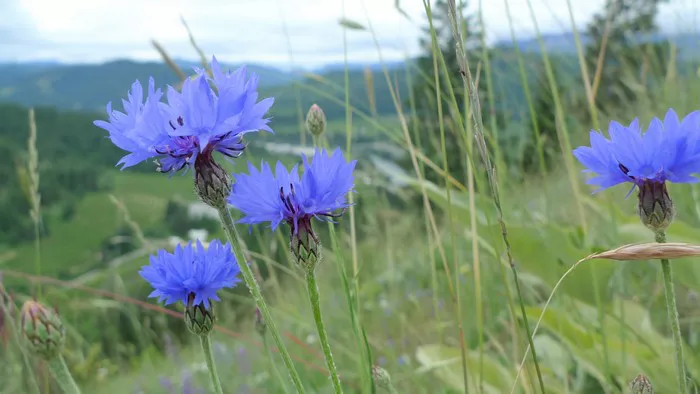In the realm of gardening and landscaping, the allure of vibrant and long-lasting flowers is undeniable. As the warm embrace of summer envelops the landscape, many enthusiasts seek to adorn their gardens with a kaleidoscope of colors that withstand the relentless sun.
The Magic of Perennial Flowers
Perennial flowers are the backbone of a garden that blooms all summer, offering a reliable source of color year after year. These resilient plants return season after season, requiring less maintenance than their annual counterparts. One noteworthy perennial flower known for its enduring summer blooms is the Coneflower (Echinacea). These daisy-like flowers, with their prominent cones, not only attract pollinators but also add a burst of color to the garden throughout the summer months.
Choosing the Right Annuals for Continuous Blooms
While perennials provide a reliable source of summer color, annual flowers play a pivotal role in infusing instant vibrancy into the garden. Marigolds, with their cheerful golden hues, are excellent annuals that bloom prolifically throughout the summer. These versatile flowers are not only easy to grow but also possess natural pest-repelling properties, making them a dual-purpose addition to your garden. When strategically planted, annual flowers complement perennials, creating a dynamic and ever-changing landscape of colors.
Creating a Color Palette with Seasonal Flowers
To achieve a garden that blooms all summer, consider the strategic use of seasonal flowers that seamlessly transition from spring to fall. Daylilies are exemplary in this regard, offering a diverse range of colors and shapes. From the classic orange and yellow varieties to the more subdued pastels, daylilies provide a continuous display of blooms, each flower lasting only a day but swiftly replaced by others in the cluster. This perpetual blooming cycle ensures a vibrant and dynamic garden throughout the summer season.
Harnessing the Power of Sun-Loving Flowers
Sun-loving flowers are key players in a garden that thrives during the peak of summer. Among these, the Blanket Flower (Gaillardia) stands out for its ability to endure the intense summer heat while producing a profusion of brightly colored blooms. These daisy-like flowers, available in various warm hues, add a touch of the southwest to your garden and attract butterflies, enhancing the overall charm of your outdoor space.
Embracing the Elegance of Climbing Flowers
For vertical interest and an added dimension to your garden, consider incorporating climbing flowers that bloom continuously throughout the summer. The classic Clematis, with its sprawling vines and an array of bloom shapes and colors, is a showstopper in any garden. Whether adorning trellises, fences, or pergolas, these climbing flowers not only add vertical beauty but also contribute to the overall tapestry of summer blooms.
The Resilience of Heat-Tolerant Flowers
As temperatures soar, selecting heat-tolerant flowers becomes paramount for maintaining a flourishing garden. The Zinnia, renowned for its ability to thrive in hot conditions, boasts a plethora of colors and shapes. These vibrant flowers are not only visually appealing but also attract butterflies, making them a delightful addition to a summer garden. With regular deadheading, Zinnias continue to produce blooms, ensuring a continuous display of color.
Water-Wise Flowers for Sustainable Blooms
In regions with water restrictions or those looking to adopt sustainable gardening practices, choosing water-wise flowers becomes essential. The Lavender plant, with its fragrant blooms and silvery foliage, is a prime example. This drought-tolerant perennial not only requires minimal watering but also adds a touch of elegance to the garden. The continuous blooming nature of Lavender makes it a sustainable and visually pleasing choice for a summer landscape.
Maximizing Impact with Mass Plantings
To create a visual impact and enhance the overall effect of summer blooms, consider mass plantings of flowers with prolonged blooming periods. Coreopsis, also known as Tickseed, is an excellent choice for this purpose. With its bright and cheerful blossoms, Coreopsis forms a carpet of color when planted in clusters. This not only amplifies the visual appeal but also ensures a stunning display of blooms that lasts throughout the summer.
The Role of Fertilization and Maintenance
Achieving a garden that blooms all summer requires proper care and attention. Regular fertilization is essential to provide the necessary nutrients for continuous flower production. Consider using a balanced fertilizer with a formulation suited for flowering plants. Additionally, timely deadheading, which involves removing spent blooms, encourages the plants to redirect energy into producing new flowers, extending the blooming period. Consistent watering, particularly during dry spells, is also crucial to support healthy growth and continuous blooming.
Conclusion
In the pursuit of a garden that blooms all summer, the careful selection of flowers, strategic planning, and thoughtful maintenance are key. Whether you opt for perennial favorites, vibrant annuals, or a combination of both, the diverse array of flowers available ensures that you can create a garden that delights the senses and captivates the eye throughout the summer months. By understanding the unique characteristics of each flower and their blooming patterns, you can orchestrate a symphony of colors that transforms your outdoor space into a haven of natural beauty. Embrace the magic of summer blooms and let your garden flourish with a kaleidoscope of nature’s finest offerings.


